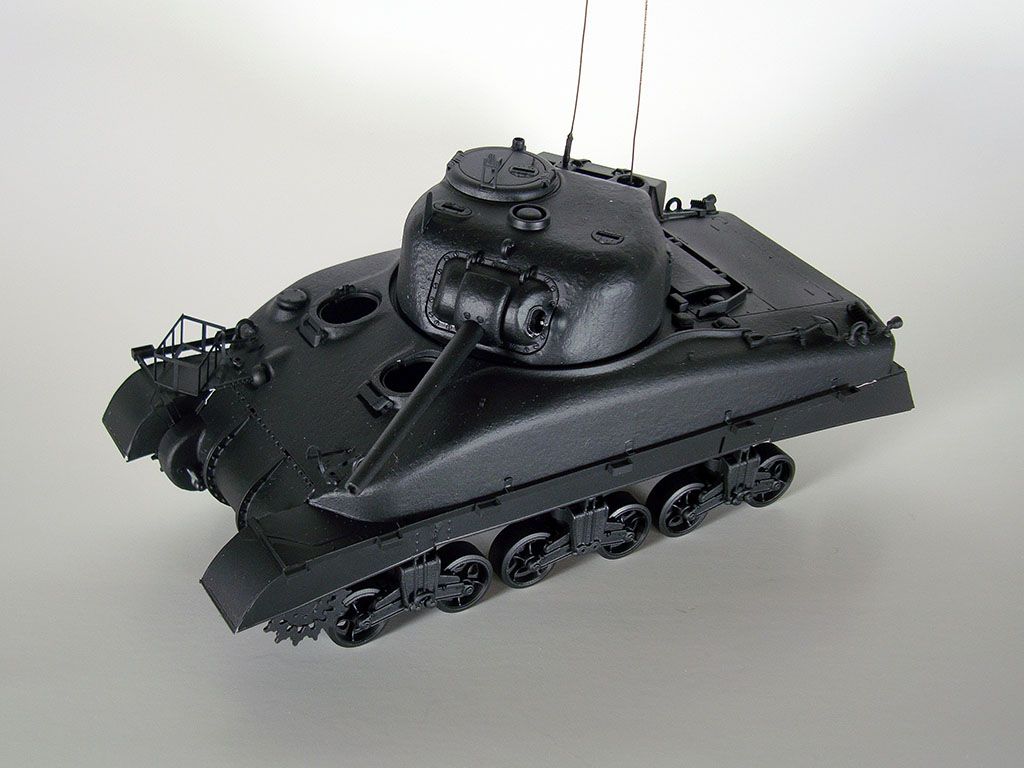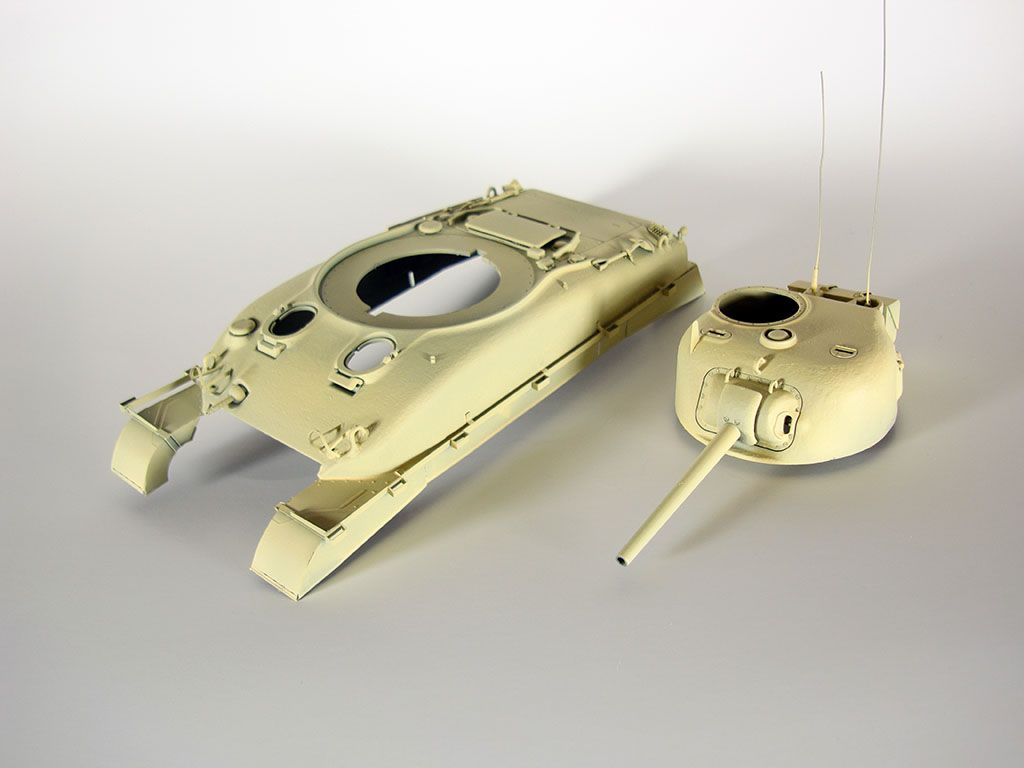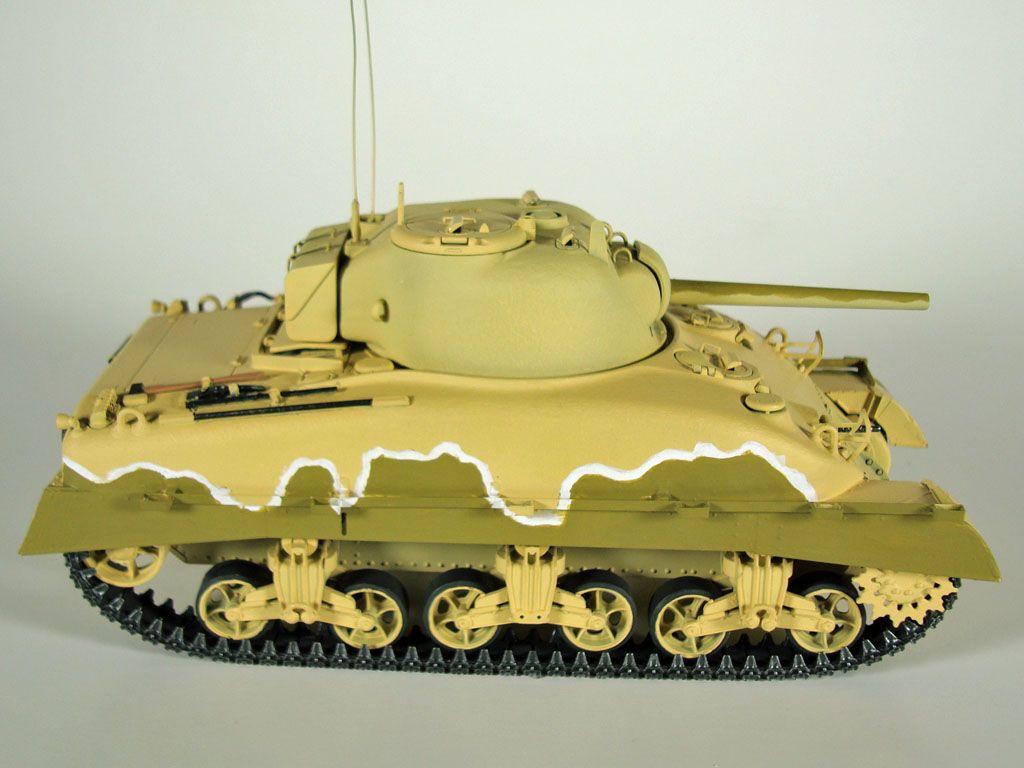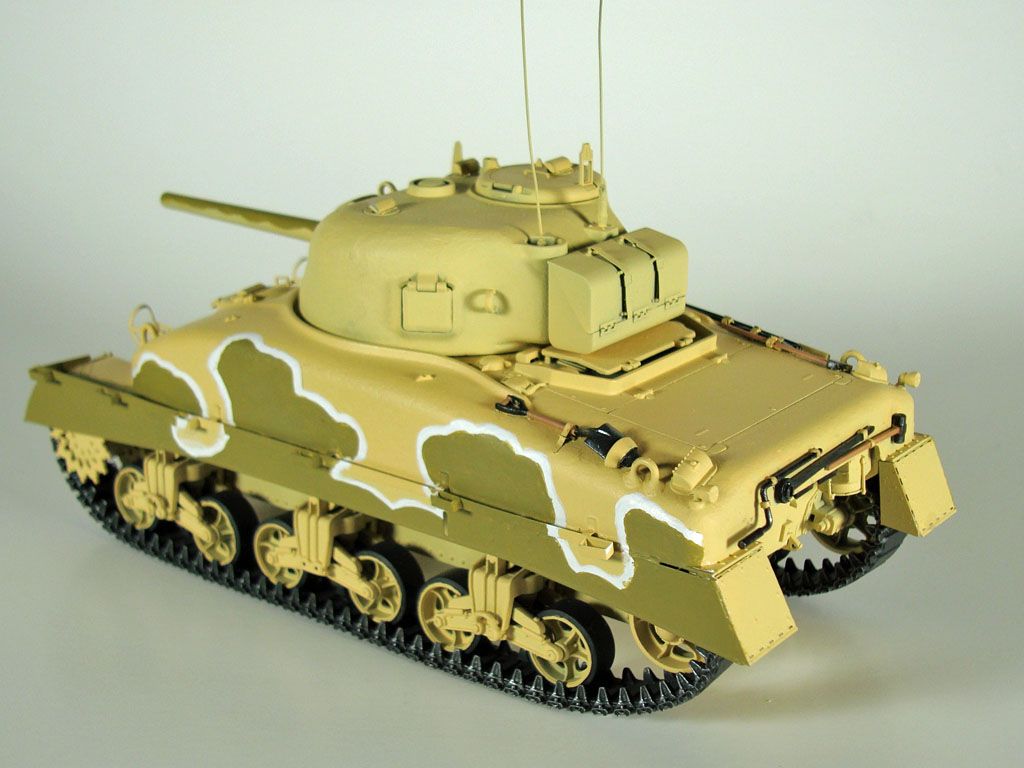Sherman II at El Alamein: Painting
As I moved into the painting phase of my Sherman II at El Alamein build, I was very happy with my progress. The kit went together well, my attempt at soldering went smoothly and I was finally ready to put paint to plastic. Unfortunately, this positive trend was not going to continue.
Things started off smoothly. I started by applying black Vallejo Surface Primer. This was my first attempt at using it and I’m hooked. It comes easily out of my airbrush at 20 psi without thinning. The finish is smooth and coverage is consistent. There is no comparison between this product and anything that comes out of a rattle can.

Next, I had to lay down the base coat and this is where I encountered my first challenge. What color is the base supposed to be?
When I started this build, I knew exactly what tank I wanted to paint:

The good news is that the Dragon kit comes with marking for this very tank. The bad news is that I quickly lost confidence in Dragon’s paint instructions which suggest using Middlestone for the top color and Dark Green for the bottom color. Both seemed far too dark for this tank.
After doing some more research, I found the top color is most likely British Standard Light Stone 61, and, after more research, I realized that this was going to be a tough color to match. Mike Starmer and Mike Cooper are the experts in regards to British World War II Camouflage and colors. In a post on Missing-Linx, Mr. Starmer describes it as a strong, medium-toned, slightly brownish-yellow that fades to a beige-like shade in harsh sun, and Mr. Starmer and Mr. Cooper provide Humbrol and Revell mixes for Light Stone 61. Unfortunately, I don’t have convenient access to either brand.
In the Vallejo Model Color line which I wanted to use for this build, Light Stone 61 seems to fall somewhere Beige (917) and Iraqi Sand (819). Keeping in mind that the color tends to fade, I decided to use Beige as my base color and then added Sunny Skintone (845) to brighten the beige at a 2:1 ratio. The net result is a little lighter and perhaps a little more yellow than the reference but I liked the result. It feels like it has been bleached by the sun and it will get darker when I whether it:

Now, with the base coat on, I moved on to paint the camouflage. As you can see from the photo of the actual tank above there is a small light colored/white stripe that separates the base color from the darker camouflage color. My plan was to paint this irregular white stripe next.
To do that, I created a 1/35-scale mask for each side of the tank by enlarging the scanned painting instructions. I transferred that mask onto wide painters tape, stuck the tape to the tank and sprayed the visible area with a light coat of white paint. One side worked perfectly, but when I reloaded my airbrush to do the other side, I thinned my paint too much. This caused my mask to bleed and paint to pool unevenly! Drat!
I wiped off as much of the wet paint as I could and then let the mess dry. Afterwards, I applied another layer of base to cover what remained of the mistake, re-masked the area and tried again. Problems persisted. While not an exact repeat, I had a lot of bleeding and some running. Double drat!
Again, I wiped off what I could, but at this point, I was starting to lose some detail. So, I decided to strip the paint from the upper hull (the only part affected) and try again. To strip the paint I used denatured alcohol, let the part soak in a foil pan for a few hours and then took a soft tooth brush to it. The paint and primer came off easily.
While I need to get better at masking, I exhausted my patience with this this time and needed to move on. So, I re-primed the upper hull, and this time after laying down the base coat I hand painted the camouflage.
I started by lightly outlining the 1/35-scale masks I recreated from the painting instructions with a pencil. Next, I traced this outline with a No. 2 round brush and filled in the lower portion of the hull using Vallejo Model Color White (951) and a wide, flat brush. It took 4-5 coats to get a solid, stroke-free white.
Now, I needed to determine what the darker camouflage color needed to be. One interesting source was from Bison Decals which shows the tank I’m modeling with painting instructions. This helped confirm the top color as Light Stone but showed the bottom color as being “Unknown colour” and illustrated with a medium olive brown. This gave me the inspiration to use Vallejo Model Color Middlestone (882).
Using the white shape as a guide, I painted freehand the shape of the now-Middlestone camouflage with a No. 2 brush and filled in the lower portion with a wide, flat brush. It took 2-3 coats to get a solid, stroke-free finish.

The road wheels and tracks were painted with Vallejo Model Color Black Grey (862) using my airbrush. The track, except for the track pads, were dry brushed with Vallejo Model Color Oily Steel (865).
I hand painted the tools as well as the bow and coaxial machine guns black, dry brushing metal components with Vallejo Model Color Gunmetal Grey (863). I layered Vallejo Model Color Cork Brown (843) over the black on all wood tools.

While it took me much longer than anticipated, I am pleased with the results…although after looking at the photos, I realize that I need to do a couple of small touch-ups. Still, I’m calling this step done and moving on to decals and weathering.
I’m looking forward to making the tank look less factory-fresh and finishing this build. Hopefully, my next post will come faster than the last took.